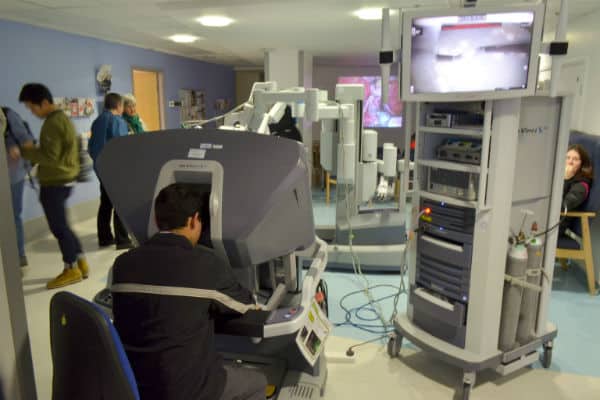Who’s Winning the Patient Care Battle?
It’s no secret that robots are slated to take over many jobs that people do, but few of these professions are as hotly-debated as healthcare workers. It has been suggested that medical assistants, nurses, doctors, and even surgeons will become obsolete in the coming years with the rise in robot practitioners, but how realistic is this possibility?
Integrating Tech is Essential to Assist the Aging Population
People are living longer and getting more mileage out of the years they have. Most consider this a mark of progress, only seen in developed nations. However, it also poses certain issues, as those over 60 now make up a significant portion of the population. Japan is often noted for this, as about one-third of the population has reached their senior years and there simply are not enough youngsters to provide their care. With a limited of number of people to handle the workload, the medical professionals who are available must be able to work “smarter” and utilize tech to streamline their activities. Initially, this came in the form of basic monitoring devices for vitals, but even this has become a robust wireless system with remote access for anyone on staff, and it’s only the tip of the iceberg.
Robotic Surgery has Been in Use Since 2000
Robotic surgery is nothing new. The da Vinci Surgical System, a device designed to increase precision and reduce blood loss during surgery, has now been in use for more than 16 years. While it initially raised eyebrows as the wave of the future, the da Vinci Surgical System doesn’t replace the surgeon. It simply allows him to perform surgery from another room or another place in the Operating Theatre. Proponents say it reduces blood loss, improves healing time, and can make some procedures less invasive, but not everyone is seeing the same benefits. Moreover, a single unit will set a hospital back millions. Although there are practical implications of the device- perhaps it will allow highly-skilled surgeons to work on patients remotely one day- we’re not yet at a point in which surgeons are being outsourced to bots and it’s not likely to happen at any point in our lifetimes. Robotics is merely a tool to help improve precision. With the introduction of robots into the operating room one could argue that the duties of a Surgical Tech in monitoring, maintaining and setting up the OR becomes even more vital.

Supercomputers are Saving Lives with Rapid Diagnosis
In 2011, IBM’s supercomputer took to the podium on Jeopardy!. Named Watson after the founder of the tech company, the computer annihilated its human counterparts. This wasn’t the end of the road for Watson, though. Researchers began feeding him medical information to see if he could diagnose people correctly. He can. Doctors in Japan found themselves struggling to uncover what ailment a woman was suffering from. They believed it was cancer, but she didn’t respond to treatment and they called upon Watson. In about ten minutes, the supercomputer detected thousands of gene mutations the patient presented with and isolated which ones were diagnostically relevant in order to determine that she did indeed suffer from a rare form of leukaemia. This occurred just months ago and the patient is expected to recover, now that she is receiving the proper treatment thanks to the help of Watson.
Robotic Nurses are Taking Over Nursing and Medical Assistant Jobs
Several forms of robotic nurses are already in use around the world. But are they sophisticated enough to replace important healthcare assisting roles including nursing assistants and medical assistants or even home health aides? Possibly…
In Japan, there’s “Robot for Interactive Body Assistance,” or RIBA for short. RIBA looks like a bear and can effortlessly transfer patients from a bed to a wheelchair. The robot is outfitted with cameras and a microphone, so it not only recognizes faces, but also responds to basic commands. Actroid-F is another Japanese robot, but it takes on a much more lifelike appearance. Researchers believe Actroid-F can help patients combat loneliness and the female version is so realistic that, when tested, some subjects couldn’t tell the difference between Actroid-F and the human sitting next to her at first. This is because the bot is specially designed to make eye contact, have facial expressions, and mimic the body movements of people around her. Real people do this as well. It’s referred to as mirroring and people only do this when they’re having conversations with someone they’ve built rapport with. Actroid-F is still being tested, but she seems to be a hit with patients so far.
Who’s winning the patient care battle? The patients are. These new advances help provide better care, but they can’t come close to providing the same services or offering compassion as real people do.
#pfhhealthcareers

